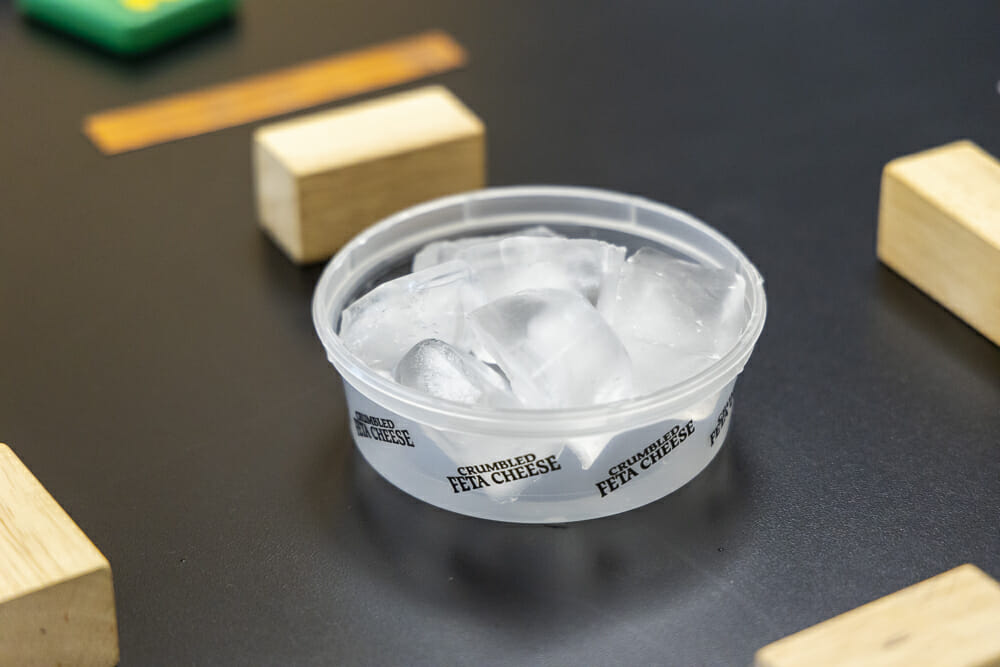In William Bander‘s Middle School science classroom, eighth-grade students donned their safety glasses and delved into the world of Thermal Kinetic Energy (TKE). Thermal energy arises when the molecules and atoms within a substance vibrate more rapidly due to an increase in temperature. This increased motion leads to kinetic energy, which is the energy associated with moving objects.
During the class, students engaged in three hands-on laboratory experiments to grasp real-world applications of TKE.
TKE and Water
For this experiment, students were presented with three beakers of water, each at a different temperature: cold, room temperature, and hot. Their task was to predict how a few drops of food coloring would behave when added to water of varying temperatures. Would the dye diffuse quickly or slowly? Would it remain near the surface or sink to the bottom? Did temperature make any difference?
TKE and Metal
In the next experiment, students set up four metal strips on a dish of ice cubes made of aluminum, copper, iron, and nickel. They meticulously measured the temperature of each metal strip every minute.
Meanwhile, another group of students examined a rod with a brass sphere on the end and another with a ring. They tested how easily the sphere could pass through the ring. Then, using a heat source, they heated and cooled the sphere and repeated the test to observe any changes in its ease of passage through the ring.
These experiments aimed to determine which beaker held the highest and lowest levels of TKE and investigate whether matter comprises moving particles and how their speed varies at different temperatures.
Benjamin Hannah ’28 said, “I most enjoyed the experiment involving the metal balls. I liked visually seeing the changes in the balls, and I felt that it was an excellent example of how TKE interacts with atoms and molecules.” Isolde Scoville ’28 enjoyed the water and metal sphere lab the most. She said, “During the sphere experiment, we took the metal sphere and put it in a metal ring, and it fit through easily. We put the sphere in the fire and then put it in the ring, and it didn’t fit through! We learned that the TKE can actually make something bigger!”
Mabel Dando ’28 also found the lab exciting. “Something I found interesting was how when we put a jar with yellow liquid into hot water, the yellow water rose, but when we put the yellow water in the cold water, it sank down. My favorite experiment was when we got to put a metal ball into fire, and after two minutes, the ball grew and was unable to fit into the ring that it used to be able to fit in,” she said.
“Out of the experiments, my personal favorite was the metal ball and ring. I found it fascinating how, just by heating the ball up, it was much harder to push through the ring. When we first started to heat the balls over the fire, I didn’t know what we were going to do, but after we tried to stick the ball in the ring again and it got stuck, it was clear to me that we were showing how heating up matter makes it spread out,” said Neel Sarikonda ’28.
The lab got Tommy Kastor ’28 thinking about other objects and their heat conductivity. “The experiment I liked the most was where my group tested how TKE moved in different metals. It was interesting how the different metals transferred heat at vastly different speeds. This made me wonder what substance conducts heat the best, like, what substance would be the best for a toaster to perfectly toast as fast and efficiently as possible,” he said.
Bander connected these experiments to everyday structures that people encounter, such as bridges with expansion joints that react differently in various weather conditions. He also prompted students to consider how climate change might impact older roads and structures lacking these expansion joints.
Congrats to our energetic students for getting to the bottom of the matter with TKE!











































